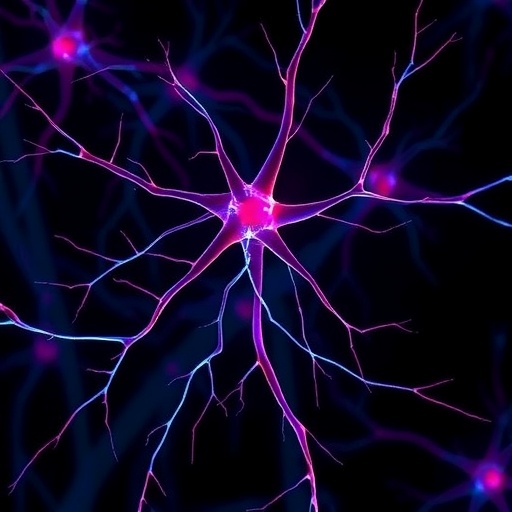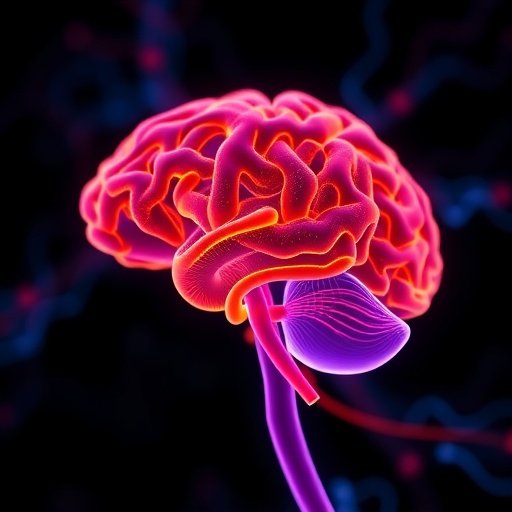
Aging is widely recognized as the most significant risk factor for numerous adult-onset neurodegenerative disorders, including amyotrophic lateral sclerosis (ALS). In diseases like ALS, the selective vulnerability of motor neurons becomes increasingly apparent as they age, ultimately leading to progressive motor dysfunction and paralysis. Interestingly, younger neurons appear inherently more resilient to the various cellular stresses implicated in neurodegeneration, raising the question of whether it might be possible to restore this youthful robustness in mature neurons. Recent groundbreaking research offers compelling evidence that reactivating developmental transcriptional programs through viral gene delivery could offer a novel neuroprotective strategy, potentially altering the course of ALS.
At the heart of this transformative research lie the embryonic motor neuron selector transcription factors ISL1 and LHX3. These transcription factors orchestrate the developmental program of spinal motor neurons during embryogenesis, directing their differentiation and establishing their identity. While their expression wanes as motor neurons mature, new findings suggest that reintroducing ISL1 and LHX3 in postnatal motor neurons can rekindle a juvenile gene expression signature, conferring a renewed capacity to resist neurodegenerative stressors. This concept taps into the plasticity of mature neurons, challenging the long-held notion that adult motor neurons are irrevocably locked into a fixed, vulnerable state.
Using the well-established SOD1^G93A mouse model of ALS, the researchers utilized a viral vector system engineered to selectively deliver ISL1 and LHX3 into postnatal motor neurons. The SOD1^G93A mutation, a superoxide dismutase 1 gene variant, is known for recapitulating many of the pathological hallmarks of human ALS, such as progressive motor neuron loss, muscle atrophy, and eventual paralysis. By targeting this model, the study directly interrogates how reactivation of embryonic transcription factors influences disease progression in a relevant biological context. The selection of viral vectors ensured the precise expression of ISL1 and LHX3 in motor neurons, mitigating potential off-target effects and maximizing therapeutic relevance.
.adsslot_6GneZbh304{width:728px !important;height:90px !important;}
@media(max-width:1199px){ .adsslot_6GneZbh304{width:468px !important;height:60px !important;}
}
@media(max-width:767px){ .adsslot_6GneZbh304{width:320px !important;height:50px !important;}
}
ADVERTISEMENT
Detailed transcriptomic analyses revealed that postnatal motor neurons treated with ISL1 and LHX3 exhibited a significant resurgence of immature gene expression programs, reminiscent of their embryonic counterparts. In particular, genes involved in synaptic plasticity, neuronal metabolism, and stress response pathways were upregulated. This reprogramming translated functionally into a marked improvement in motor neuron survival and function, as evidenced by delayed onset of paralysis and extended lifespan in treated SOD1^G93A mice relative to controls. These findings underscore the therapeutic potential of rejuvenating intrinsic resilience mechanisms by revisiting developmental gene networks.
Beyond motor neuron survival, the study illuminated how ISL1 and LHX3 reexpression modulated cellular homeostasis at multiple molecular levels. Notably, treated neurons displayed enhanced proteostasis, with improved clearance of misfolded protein aggregates, a pathological hallmark in ALS. The transcriptional revival also appeared to bolster mitochondrial function and attenuate oxidative stress, further contributing to neuronal resilience. This multifaceted protective effect suggests that the embryonic transcription factors enact a broad neuroprotective cascade rather than targeting a single pathological pathway.
The mechanistic insights gathered highlight the central role of transcriptional reprogramming in combating age-related degeneration. By restoring a developmental gene expression milieu, mature motor neurons might regain the capacity to activate intrinsic repair and stress mitigation pathways that are otherwise diminished with age. This approach differs fundamentally from traditional strategies aimed solely at mitigating downstream pathological features, shifting the therapeutic paradigm towards resetting the cell’s identity and intrinsic robustness.
In addition to confirming the efficacy of ISL1 and LHX3 in adult motor neurons, the study emphasizes the importance of lineage-specific selector genes as neuroprotective agents. Unlike generic stress response enhancers, these transcription factors are tightly integrated into the motor neuron identity network, suggesting a precision approach that may minimize unintended consequences associated with widespread gene modulation. Such lineage-specific targeting could redefine how neurodegenerative diseases are treated, focusing on reestablishing cellular identity and function rather than merely managing symptoms.
Furthermore, the research team explored the temporal dynamics of transcription factor delivery, demonstrating that early postnatal intervention yielded the most pronounced benefits. This temporal preference indicates a critical window during which neuronal plasticity remains sufficiently malleable for reprogramming. Understanding these windows could inform clinical translation, optimizing therapeutic timing to maximize efficacy in human patients.
While promising, the study acknowledges the challenges ahead. Translating viral-mediated gene delivery to human patients requires careful consideration of safety, delivery efficiency, and immune response. Moreover, the long-term effects of sustained expression of embryonic transcription factors in mature neurons remain to be elucidated. Potential risks include aberrant cellular proliferation or unintended reversion to immature states incompatible with adult neuronal function. Hence, balancing reactivation of youthful programs while preserving mature functionality is paramount.
Nevertheless, this pioneering work sets the stage for a new class of interventions aimed at reinstating endogenous resilience mechanisms through targeted transcriptional modulation. It raises exciting possibilities for combinatory therapies where reprogramming factors complement conventional approaches such as pharmacological agents or stem cell therapies, working synergistically to delay or arrest neurodegeneration.
Importantly, the findings also contribute to a broader understanding of neuronal aging. They reaffirm that the aging process involves not only cumulative damage but also a decline in the capacity to activate developmental gene networks critical for maintenance and repair. Dissecting the molecular basis of this decline might reveal additional targets amenable to therapeutic modulation, extending the relevance of this approach beyond ALS to other neurodegenerative diseases like Parkinson’s and Alzheimer’s.
This research exemplifies the power of developmental biology to inform therapeutic innovation. By leveraging insights into how motor neuron identity is established and maintained during embryogenesis, scientists can now envisage strategies to revert mature neurons to a more adaptable and robust state. Such strategies challenge traditional dogmas about neuronal irreversibility and open exciting avenues for clinical neuroscience.
Moreover, the selective nature of ISL1 and LHX3 in defining motor neuron identity highlights potential for developing gene-editing or small-molecule approaches that mimic transcriptional effects without requiring viral delivery. Such technologies could provide safer, more controllable modalities for therapeutic reprogramming in the future.
In summary, the reactivation of embryonic motor neuron programming factors in mature neurons heralds a promising new frontier in ALS research. By restoring aspects of cellular youthfulness and intrinsic resilience, this approach offers hope for mitigating otherwise relentless neurodegenerative trajectories. While many hurdles remain, the integration of developmental biology with neurotherapeutics marks a transformative step towards more effective and durable treatments for ALS and potentially other age-related neurological disorders.
As the scientific community moves forward, the imperative will be to deepen mechanistic understanding, refine delivery methods, and carefully evaluate the translational potential of transcription factor reprogramming. If successful, these efforts could rewrite the prognosis of devastating neurodegenerative diseases, offering renewed hope to patients and families worldwide.
Subject of Research: Amyotrophic lateral sclerosis (ALS), neurodegeneration, motor neuron resilience, transcription factor reprogramming
Article Title: Embryonic motor neuron programming factors reactivate immature gene expression and suppress ALS pathologies in postnatal motor neurons
Article References:
Lowry, E.R., Patel, T., Costa, J.A. et al. Embryonic motor neuron programming factors reactivate immature gene expression and suppress ALS pathologies in postnatal motor neurons. Nat Neurosci (2025). https://doi.org/10.1038/s41593-025-02033-x
Image Credits: AI Generated
Tags: adult-onset neurodegenerative disordersALS treatment strategiescellular stress resilience in neuronsdevelopmental transcriptional programs in neuronsembryonic motor neuron factorsjuvenile gene expression reactivationmotor neuron plasticity researchneurodegeneration and agingneuroprotective gene therapynovel ALS therapeutic approachesreversing motor neuron damagetranscription factors ISL1 and LHX3




